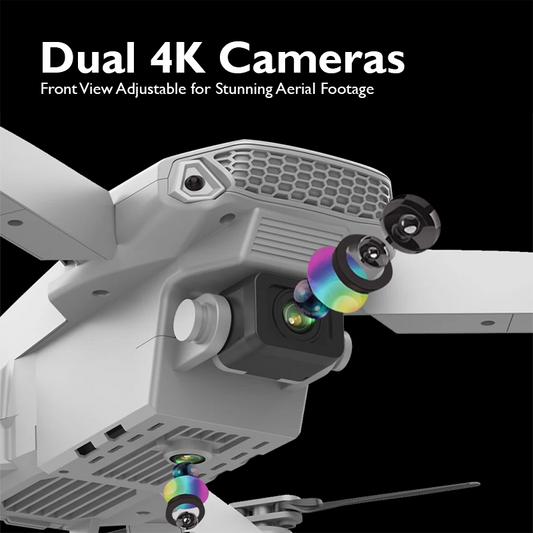How to Conduct a Professional Drone Site Survey

In recent years, drones have revolutionized various industries with their ability to capture high-resolution images and data from above. Among the myriad applications, conducting site surveys using drones has emerged as a game-changer for professionals in construction, agriculture, mining, and environmental monitoring. However, to leverage the full potential of drone technology, one must understand the intricacies of conducting a professional drone site survey. In this comprehensive guide, we'll delve into the step-by-step process of conducting a successful drone site survey, covering everything from planning and preparation to execution and data analysis.
Understanding the Importance of Drone Site Surveys:

Before delving into the nitty-gritty of conducting a drone site survey, it's essential to understand why it's such a crucial process. Site surveys provide invaluable insights and data that aid decision-making processes in various industries. Whether it's assessing the topography of a construction site, monitoring crop health in agriculture, or mapping terrain in mining operations, drone surveys offer unparalleled accuracy and efficiency. By harnessing drone technology, professionals can gather data quickly, safely, and cost-effectively, ultimately leading to improved project outcomes and resource optimization.
Step 1: Pre-Flight Planning and Preparation

The success of any drone site survey hinges on meticulous planning and preparation. Before taking off, it's imperative to define the objectives of the survey and identify the specific data requirements. Whether you're mapping terrain, monitoring vegetation, or inspecting infrastructure, clarity on objectives will guide the entire survey process. Additionally, it's essential to conduct a comprehensive risk assessment and ensure compliance with regulatory requirements. Obtain any necessary permits or permissions and assess environmental factors such as weather conditions and airspace restrictions.
Step 2: Selecting the Right Equipment and Software

Choosing the right drone and accompanying equipment is crucial for the success of your survey mission. Consider factors such as flight time, payload capacity, and camera specifications based on your project requirements. Additionally, invest in quality software for flight planning, data capture, and post-processing. Platforms like Pix4D and DroneDeploy offer advanced features for mission planning, data processing, and analysis, streamlining the entire workflow and ensuring accurate results.
Step 3: Mission Execution and Data Capture

With thorough planning and the right equipment in place, it's time to execute your survey mission. Prioritize safety protocols and conduct pre-flight checks to ensure the drone is in optimal condition. Utilize flight planning software to define the survey area, altitude, and flight path, ensuring comprehensive coverage and overlap for accurate data capture. During the flight, maintain situational awareness and monitor the drone's performance closely. Once the mission is complete, securely store the collected data and proceed to post-processing.
Step 4: Data Processing and Analysis

Post-processing is where raw drone data is transformed into actionable insights. Utilize specialized software to stitch together aerial imagery, generate 3D models, and perform analyses such as volume calculations, vegetation health assessments, or infrastructure inspections. Pay attention to accuracy and precision, ensuring that the processed data meets the required standards for your project. Collaborate with subject matter experts if necessary to interpret the findings accurately and derive meaningful conclusions.
Step 5: Reporting and Visualization

Communicating the results of your drone site survey effectively is essential for stakeholders to make informed decisions. Prepare detailed reports and visualizations that highlight key findings, trends, and recommendations. Utilize interactive maps, 3D models, and annotated images to convey complex information in a clear and accessible manner. Tailor the presentation format to the preferences of your audience, whether it's project managers, clients, or regulatory agencies, ensuring that the insights gleaned from the survey are actionable and impactful.
Conducting a professional drone site survey requires careful planning, execution, and analysis. By following the steps outlined in this guide and leveraging the capabilities of drone technology, professionals can gather accurate data efficiently and unlock new opportunities for innovation and optimization in their respective industries. Whether it's improving project timelines, enhancing resource management, or mitigating risks, drone surveys offer unparalleled benefits that are reshaping the way we approach site assessment and monitoring. Embrace the power of drones and elevate your surveying capabilities to new heights.
Explore a variety of drones at our online drone store.Happy Flying!











